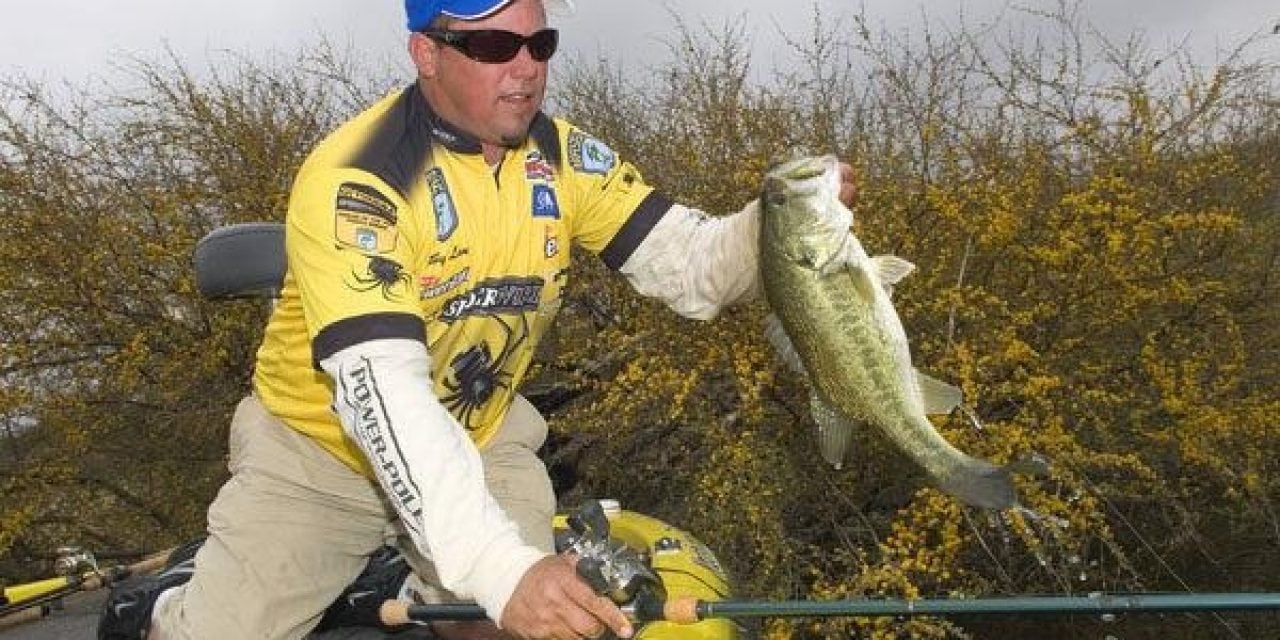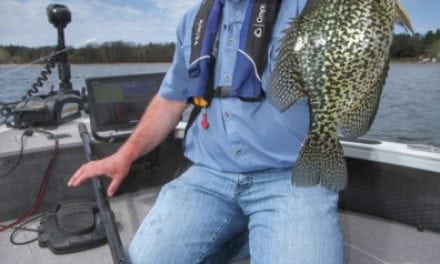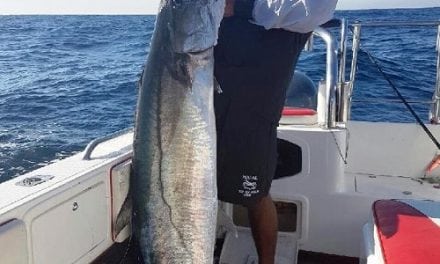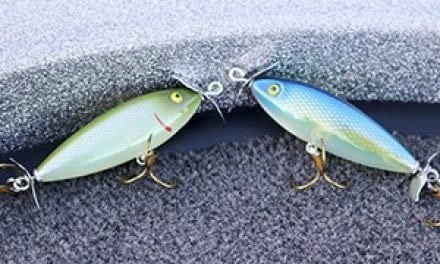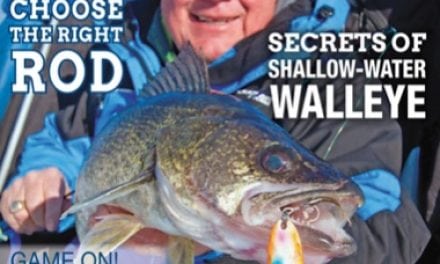Even though the 11-pound bass Bobby Lane caught during a Bassmaster® Elite tournament in Calif. hit a swimbait, the Yamaha Pro readily admits his favorite spring fishing technique is flipping shallow, weedy cover, and he adds, it’s just as likely to yield a trophy-class bass as the swimbaits are.
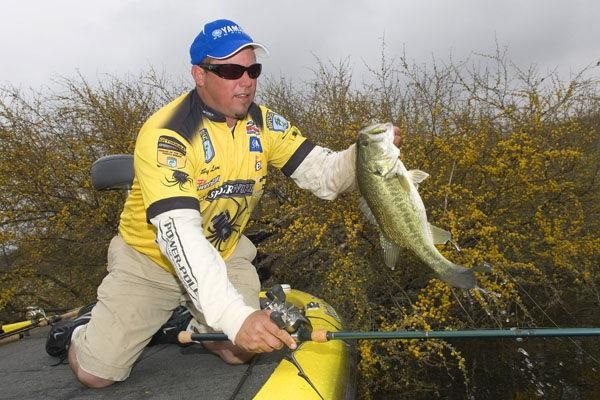
“Flipping allows you to present a lure right into the heart of thick cover where bass like to hide,” explains Lane, who’s caught numerous bass in the 10 to 12-pound range with the technique. Living in Florida, he frequently flips thick, matted hydrilla, but as a fulltime tournament pro, he also points his flipping stick at laydowns, standing timber, lily pads, and boat docks.
“I flip a little differently in the spring than I do at other times of the year,” continues the Yamaha Pro, “because I’m always thinking about larger fish. My basic approach is to generate a reaction bite, rather than a feeding bite, which is what I try for in the summer and fall.
“To do that, I rig with a very heavy sinker, usually 1 ¼-ounce, that pulls my lure to the bottom very fast. Speed is what triggers most reaction strikes with any type of lure, and to get flipping speed all you do is use a heavier sinker.”
The rest of Lane’s flipping arsenal includes a heavy action rod ranging in length from 7’2″ to 7’6″ in length, and 65-pound braided line so he can pull fish out of the cover. His lures are usually bulky plastic creature baits or crawfish imitations with extra appendages that wave with more lifelike action in the water.
“The bass you’re going after this time of year is sitting in heavy cover waiting to move shallow to spawn,” continues Lane, “so it’s probably not very hungry. That’s why I try to get a reaction strike; the fish just hits purely out of reflex because something just fell right beside it.”
Although he normally likes to fish fast, the Yamaha Pro emphasizes the importance of providing spring bass with repeated opportunities to strike. Thus, he usually hops his lures up and down several times to create multiple falls once it’s in the cover. Frequently, however, Lane gets a strike the very first time his lure falls.
“The ideal place to flip for big fish this time of year is in weedy vegetation growing in the mouth of a spawning pocket or cove,” he explains. “When bass begin moving shallow to spawn, they do so in stages, stopping at different places while they wait for the right water conditions. Vegetation attracts these bass because of the protection it provides, the availability of baitfish, and because the water around the vegetation will usually be a little clearer.
“Not only will other bass move into the same vegetation to replace earlier bass, but fish returning to deep water after spawning will generally stop at the same spot, as well. That’s why vegetation is one of the first things I look for in April and May.”
 When he finds them, Lane doesn’t hesitate to fish shallow laydowns and standing timber that also provide cover for bass moving shallow to spawn. Regardless of the type of cover, he still tries to elicit reaction strikes with his fast-falling presentation.
When he finds them, Lane doesn’t hesitate to fish shallow laydowns and standing timber that also provide cover for bass moving shallow to spawn. Regardless of the type of cover, he still tries to elicit reaction strikes with his fast-falling presentation.
“The more shallow the cover, the further away you need to stay so you don’t spook any fish using that cover,” Lane cautions, “but always be prepared for a strike on your very first presentation, because that’s when bass react the best. It’s as if they’re taken by surprise, which they are. Put your lure into the thickest, heaviest portion of the cover if you can, too.”
The Yamaha Pro also advises anglers who are flipping to concentrate on bright, sunny days rather than during cloudy weather because the sun will not only be warming the water, it will also push bass into cover.
“On cloudy days bass will roam a lot more and flipping becomes much less productive,” he points out, “but on a bright, cloudless day, the fish will hold very tight to vegetation and brush, which is exactly what you want for flipping.
“I know swimbaits catch a lot of bass this time of year all over the country, but they’re most effective in open water. When bass are using cover, I don’t believe there’s a better presentation than flipping.”
The post Flipping Shallow Cover Works Well For Big Spring Bass appeared first on ODU Magazine-North America's #1 Digital Fishing Magazine.

